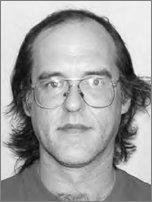
How to Catch 700 Online Sexual Predators
Most people knew Tennessee resident Royal Raymond Weller, 49, by his online handle of “G.O.D.” As host of the Kids the Light of Our Lives website, Weller shared his collection of child pornography with his online congregation of more than 700 pedophiles.
“You could go and if you were in the club, arrange a time and a place when online you could view a child being raped and brutalized in real time,” said Jim Gamble, chief executive of Britain’s Child Exploitation and Online Protection (CEOP) Centre.
The photos were heartbreaking. The live streaming videos, basically “on-demand” sexual molestation, were the worst. Babies as young as a few months old were victims. Investigators involved with one of the world’s largest online child pornography stings still can’t get the images out of their minds.
The case, later named Project Wickerman, began in 2005 in Edmonton, Alberta, Canada, in a jail cell. A prisoner wanted to make a deal by trading his online contacts for some in-prison perks. The investigation soon moved east where Toronto police discovered the Kids the Light of Our Lives chat room. After the initial investigation, Canadian authorities from the Virtual Global Taskforce believed the child pornography network was big—very big. In turn, the Canadian authorities informed the British police, who also began to gather evidence and work with law enforcement agencies around the world. In March 2006, Weller was arrested along with more than 40 other people, but the online horror didn’t stop.
Within a week after the arrests, the chat room was back in service, hosted by “Son-Of-God.”
Sgt. Paul Krawczyk, then an undercover detective with the Toronto Police Service’s Child Exploitation Section, joined the chat room after Weller’s arrest, using a pseudonym to track the online users who frequented the site. Within a week, Krawczyk had gained the trust of everyone there, including Son-Of-God.
“They thought police had done their case and wouldn’t be following them, but at the same time they were really careful,” he said. Krawczyk fit in so well with the group that the members of the network appointed him the “bouncer” for the chat room.
“They actually gave administrative powers to the only cop in the room,” he said. “It gave me power to vet members—but I didn’t want to kick people out of the room. I wanted them to come in and be welcome so we could arrest them. It gave me the power to be able to trace the members. That’s why we wanted this power and they gave it to us on a silver platter. And I was sitting there the whole time saying: ‘You don’t know what you’re getting into.’”
Before long, Krawczyk discovered that Son-Of-God lived in Britain, which fueled the start of the investigation in England. On September 28, 2006, the CEOP arrested 27-year-old Timothy David Martyn Cox (aka Son-Of-God) and charged him with nine offenses, all dealing with the possession and distribution of indecent images of children. Cox, who had been one of the pedophiles involved in Project Wickerman, saw there was a “gap in the market” and was responsible for moving the chat room somewhere else.
In fact, Cox operated the chat room out of his bedroom. Although he lived with his parents, who owned a microbrewery on the property, none of his family knew about his online activities.
When Cox was arrested, he had nearly 76,000 pornographic images of children on his computer, plus enough evidence to convict him of his online dealings by offering nearly 11,500 images to chat room users.
Nabbing Cox was a big coup, but the undercover officers on the case wanted to keep members of the chat room from getting suspicious. The officers pretended to be Cox and posted a message that he was stepping away for a 30-minute tea break. The ploy worked. The 70-plus members simply waited until Cox returned to download and view images and videos. For the next 10 days, authorities continued to operate the chat room, making more arrests, and then finally shut it down. But shutting down the second website didn’t stop members from once again moving their resources and sharing the child pornography elsewhere.
Within days, Brit Gordon Mackintosh, 33 (aka “lust4skoolgurls” and “silentblackheart”), rekindled the activities in another chat room, and officials amassed more evidence and waited. By January 2007, Mackintosh was arrested on 27 counts of creating, possessing, and distributing indecent images and videos. When authorities linked more than 5,000 indecent and explicit images of children and 392 obscene movie files to him, Mackintosh pled guilty to all counts. He remains in a British jail without a scheduled hearing for his sentencing.
In addition to catching Cox and Mackintosh, law enforcement officials in 35 countries arrested more than 700 people, 200 of them in Great Britain alone. In the sting, British authorities rescued more than 30 children, ranging in age from a few months to those in their teens.
On June 18, 2007, Cox pled guilty in Britain to the nine offenses of possessing or distributing obscene photos of children and was sentenced to an indefinite jail term at Ipswich Crown Court, Buxhall, England. The court’s definition of “indefinite” means that Cox will stay in prison until authorities decide that he no longer poses a threat to minors (Cox actually giggled when told he may never leave prison).
“You are obsessed with images of children being sexually abused,” Judge Peter Thompson told Cox during the sentencing. “These are shocking images which involve very young children—in the worst cases being subjected to sadistic, painful abuse which you, for some distorted reason, appear to take enjoyment from.” The judge said that since Cox posed “significant risks,” he had to be imprisoned for public protection.
For CEOP’s Gamble, the verdict represented a powerful warning for anyone using the internet to assist in sexually exploiting children. “From the apparent ‘safety’ of his home, Cox spent hours each day planning, promoting, and encouraging the abuse and exploitation of innocent young victims,” said Gamble. “In doing so he provided a service to hundreds of like minded individuals, enabling those with a sexual interest in children to share indecent images and discuss further plans for abuse. Any individual who thinks they can carry out such horrific activities undetected is in for a very rude awakening. The belief that the internet provides anonymity is unfounded and for Cox and Mackintosh it has already proved to be a costly misconception.”
The U.S. Department of Justice (DOJ) reported that the “technological ease, lack of expense, and anonymity in obtaining and distributing child pornography (online) has resulted in an explosion in the availability, accessibility, and volume of child pornography.” The DOJ estimates that 200 new pornographic images of children are posted daily to the internet’s collection of more than 1 million images.
The Internet Watch Foundation website notes that “the severity of online child abuse content is increasing, with a four-fold rise in images depicting the most severe abuse, such as penetrative and sadistic sexual activity. This trend reflects an apparent growing demand for purchasing more severe images with nearly 60 percent of commercial child abuse websites selling child rape images.”
In November 2006, Australian authorities discovered another online network of child pornography and engaged the help of authorities in Great Britain, the U.S., Germany, and Canada to apprehend members of the network. Authorities managed to break through the many layers of encryption, background checks, and other security measures before being approved by the site’s owners. Their results provided enough evidence to convict the players and stop the child pornography ring, especially the men who preyed on its victims.
“All I can say is that they are worth the download,” wrote James Freeman, 47, known in the global porn ring as “Mystikal,” according to court documents. “My thanks to you and all the others that together make this the greatest group of pedos ever to gather in one place.” Freeman was one of 12 Americans arrested in the sting in 11 states: California, Connecticut, Florida, Idaho, Indiana, North Carolina, Oregon, Pennsylvania, Texas, Virginia, and Washington.
Following a 6-day trial in January 2009, Freeman was found guilty on six counts, including engaging in a child exploitation enterprise; conspiracy to advertise, transport, ship, receive, and possess child pornography; advertising, transporting, and receiving child pornography; and obstruction of justice. On April 28, he was sentenced to life in prison.
A 35-count indictment unsealed in March 2008 in the Pensacola, Florida, U.S. District Court detailed conversations among the 12 Americans accused of trading and advertising the pornography.
According to one such conversation, “This one may offend here, so a word of caution, these girls are heavily drugged,” wrote 54-year-old Raymond Roy, known as “Nimo,” on July 10, 2007. “Not much action to speak of, the girls are to [sic] (expletive deleted) up to move, or resist. Three girls, the first one being the youngest, around 8 or 9 [years old].”
Roy was sentenced to 360 months in prison on December 29, 2008, after pleading guilty to five charges, including engaging in a child exploitation enterprise; conspiracy to advertise, transport, ship, receive, and possess child pornography; advertising child pornography; transporting child pornography; and receiving child pornography.
In March 2008, 10 other men were arrested, and more than 400,000 photos, video files, and other images were confiscated, showing children as young as 5 years old engaging in sexual acts. The 10 received prison sentences ranging from 164 to 365 months.
After the arrests, J. Stephen Tidwell, FBI executive assistant director, said, “This is beyond a quantum exponential leap for us to see folks that have gone to this much trouble to produce this kind of volume of horrific exploitation of children.”
While Tidwell said that 20 of the children depicted in the images had been rescued, the job for law enforcement was far from over. “But with 400,000 [images] we’re going to be at this for years, trying to find the [other] victims,” he said.
A year later, on March 10, 2009, the DOJ issued a press release, which in part stated: “According to a 40-count superseding indictment handed up on March 19, 2008, the defendants were members of a highly sophisticated international network. The group was a well-organized criminal enterprise whose purpose was to propagate child sex abuse images to its membership during a 2-year period. According to their plea agreements, members of the illegal organization used internet newsgroups—large file-sharing networks where text, software, pictures and videos can be traded and shared—to traffic in illegal images and videos depicting prepubescent children, including toddlers, engaged in various sexual and sadistic acts. Specifically, an Australian constable who infiltrated the group in August 2006 testified about how group members employed a complex system of pseudonyms, screening tests for new members, and sophisticated encryption methods to avoid detection. He also testified that the group traded more than 400,000 images and 1,000 videos of child sexual abuse before it was dismantled by law enforcement.”
Today, law enforcement agencies worldwide are actively pursuing online pedophiles and predators in an effort to keep the world’s children safe from harm. When law enforcement agencies from different countries collaborate, it represents a victory for all.

Timothy David Martyn Cox, aka Son-Of-God, who ran a website of online child pornography [Courtesy of Paul Krawczyk, Child Exploitation Section of the Toronto Police Service]

James Freeman, convicted in an international sting of online sex offenders [Courtesy of Santa Rosa Sheriff’s Office]